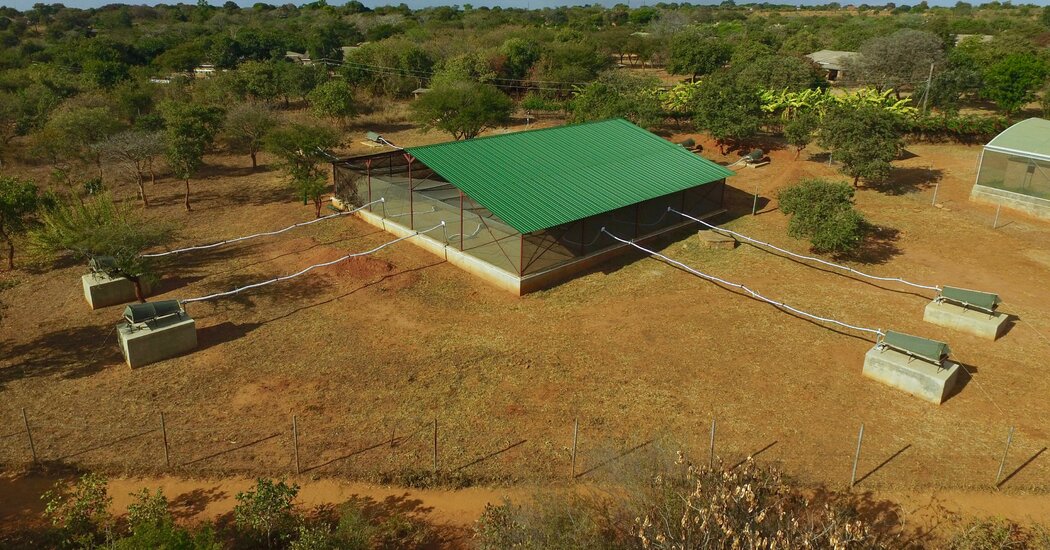Michigan Paper Mill Fungal Infection Leaves 1 Dead and Nearly 100 Sickened
At least one person has died and nearly 100 people have gotten sick in a rare fungal outbreak at a paper mill in Michigan, the health authorities said, prompting the plant to temporarily close as local and federal investigators try to identify the source.
The outbreak of blastomycosis at the Billerud paper mill in Escanaba, Mich., has escalated since February.
Local health authorities initially identified about 15 likely cases. By mid-April, that number had grown to 21 confirmed cases and 76 probable cases. Twelve people have been hospitalized and one person has died.
All of the reported cases have been among workers, contractors or visitors to the plant.
Billerud, a Sweden-based paper and packaging company, said on Thursday that it planned to close the mill for three weeks starting next week to conduct a deep clean, inspect ventilation systems, replace filters and test various raw materials coming into the mill, which employs about 830 people. The additional cleaning requires large portions of the mill to be empty, it said.
“Identifying the source can be difficult because the Blastomyces fungus is endemic to the area,” the company said in a statement. “There has never been an industrial outbreak of this nature documented anywhere in the U.S.”
Blastomycosis is an infection associated with the Blastomyces fungus, which grows in moist soil and decomposing matter, such as wood and leaves, and can become airborne if disturbed.
Blastomycosis infections are rare. In 2019, the U.S. Centers for Disease Control and Prevention reported 240 cases of blastomycosis in total.
On average over the past five years, only 26 cases have been reported in all of Michigan, according to the local health agency. However, the agency noted, the Upper Peninsula of Michigan is a known risk area for blastomycosis infection.
According to the C.D.C., “Blastomycosis remains poorly understood.” The fungus mainly lives in Midwestern, South Central, and Southeastern states, especially in areas around the Ohio and Mississippi River valleys, the Great Lakes and the St. Lawrence River.
Most people who breathe in Blastomyces spores will not get sick. Symptoms include a cough (sometimes with blood), fever, chest pain, difficulty breathing, night sweats, fatigue, weight loss, muscle aches and joint pain.
Symptoms appear between three weeks to three months after exposure. Blastomycosis can be treated with antifungal medications.
Symptoms for the initial patients began in January and February, the authorities said.
A team led by the National Institute for Occupational Safety and Health visited the mill on March 27 and 28 after a request from Billerud, according to an April 7 letter from Marcia Stanton, a health scientist with the agency, which was posted by CBS.
The agency advised the company to make N95 masks available to reduce potential exposure and to inspect the ventilation system and ductwork for “evidence of water incursion and microbial growth” while investigations continued.
On Saturday, the C.D.C. said in a statement that it planned to return to the mill in late April to offer Blastomyces urine antigen screening tests for potential exposure. Participation would be voluntary.
Investigators will use the test results and a questionnaire “to inform an environmental sampling strategy,” the agency said, adding that the data might help to narrow testing sites at the 2,000-acre mill.
“Our top priority now and always is protecting the health and safety of our employees and contractors who work at our Escanaba mill,” Christoph Michalski, the president and chief executive of Billerud, said in a statement. “We care deeply about their well-being and are doing everything we can to protect them and identify and address the root cause of the blastomycosis fungal infections.”
According to Billerud’s website, the Escanaba mill began making paper in 1911 as the Escanaba Pulp and Paper Company. Today, the mill produces graphic papers used in commercial printing, marketing materials and labels and has the capacity to produce about 660,000 tons of paper per year.


